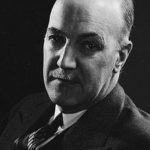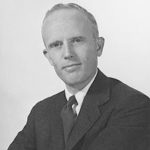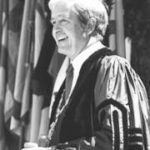In the 1940s, then-Yale President Charles Seymour called for the United States to support the Allies in the second world war. The following decade, Whitney Griswold used his position as University president to speak out against McCarthyism and the Red Scare. And in the ’60 and ’70s, Kingman Brewster openly denounced the Vietnam War.

University President Charles Seymour, who served during the 1940s
Now, nearly four years into his tenure, University President Peter Salovey is confronting a new moment of political turbulence: the rise of President Donald Trump. As university leaders across the United States scramble to respond to the new administration, Salovey faces a challenging strategic question: When should he speak out against Trump, and how should he communicate the University’s message?
Since the inauguration in January, Salovey has said relatively little about the new president in public, limiting his comments to two campuswide emails that denounced Trump’s executive order banning immigrants from seven predominantly Muslim countries.
In an interview with the News last week, Salovey said he will only respond to Trump on issues that directly affect University life, such as federal funding for research and immigration policies that impact students and faculty.
“I’m not reluctant to speak out,” Salovey said. “But I think it’s important that for my voice to have maximum impact, I should speak out on issues that are most relevant to University life.”

University President Whitney Griswold served during the 1950s Red Scare
As a tax-exempt 501(c)3 organization, Yale is not allowed to endorse or oppose political candidates, and University leaders are prohibited from making “partisan comments,” according to Internal Revenue Service guidelines.
“Constraining my speech to issues that directly affect us is a way of being in compliance with those rules,” Salovey said. “I have to choose my words in a wise way, and if you speak on everything people begin to listen to nothing. When I speak out … I want to make sure I have an impact.”
Still, some students at Yale said Salovey should respond more aggressively to the new administration in Washington, D.C. Will McGrew ’18, who helped lead Yale Students for Hillary, said Salovey should use the prestige of his job title to encourage university leaders across the country to speak out against Trump.
“His choice is much more likely to have an impact nationally than the president of [Louisiana State University] or the president of Kansas State,” McGrew said. “If you’re the president of Yale, you have the ability to impact the public discourse.”
On Jan. 29, two nights after Trump signed the immigration order, Salovey sent an email condemning the policy and expressing support for students and faculty who might be affected. But that evening, he did not speak at a vigil on Cross Campus attended by hundreds of community members, later saying that the event was organized by students and that no one asked him to participate.
That approach puts Salovey in line with the leaders of most of Yale’s peer institutions. Only one Ivy League president has given a speech about Trump: Amy Gutmann of the University of Pennsylvania, who denounced the immigration order at a rally on the university’s quadrangle last month. In her speech, Gutmann touched on her own immigrant family background, including her father, who was a Jewish immigrant who fled Nazi Germany.
But the rise of Trump has also prompted community members to wonder whether political jeremiads from the Yale president would make any impact on the national discussion. In the past, Yale presidents could summon major newspapers to campus if they planned to give an important speech, according to former University Secretary Sam Chauncey ’57. But gaining traction in the world of social media and 24/7 cable news is significantly more difficult.

University President Kingman Brewster led during an era of on-campus protests
“It was easier to do in the ’60s or the ’50s than it is now, because there is so much generation of news,” Chauncey said. “Even if the president of Harvard or Yale gets up and says ‘this was a terrible mistake,’ it may not even be covered. If Peter Salovey wanted to make a major statement to the country, I don’t know how the hell you’d do it in today’s environment.”
Moreover, for the most part, university presidents are no longer recognizable national figures the way they were 50 years ago, Chauncey added.
“University presidents either don’t want to take that leadership role, or the society just isn’t interested in hearing from them,” he said.
Chief Research Archivist Judith Schiff, who has studied the University’s history for decades, said Yale presidents have engaged in varying levels of political activism, largely depending on their personality. Brewster spoke openly about civil rights and the Vietnam War, whereas his successor A. Bartlett Giamatti focused on refurbishing campus buildings and resolving a bitter union dispute, Schiff said.
Salovey told the News that he sees his approach as “quite similar” to those of past Yale presidents. And he emphasized that the University has responded to Trump in a variety of ways, joining a lawsuit against the immigration order and signing letters sponsored by the Association of American Universities.
Salovey has not travelled to Washington since the inauguration, but generally the Yale president visits the Capitol about twice a semester to meet with lawmakers. And in his interview, Salovey defended his campuswide emails as an important tool for communicating quickly with students and faculty.
“I don’t have strong feelings whether speeches are better than email,” he said. “But the point is, often we need to get the word out quickly, and there may not be an appropriate forum planned. Email allows my voice to be heard.”







